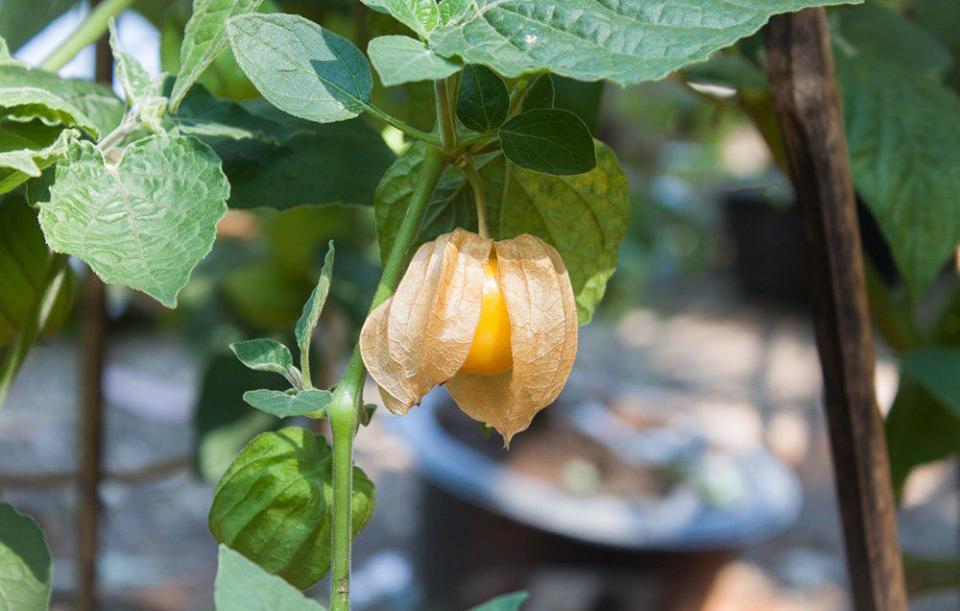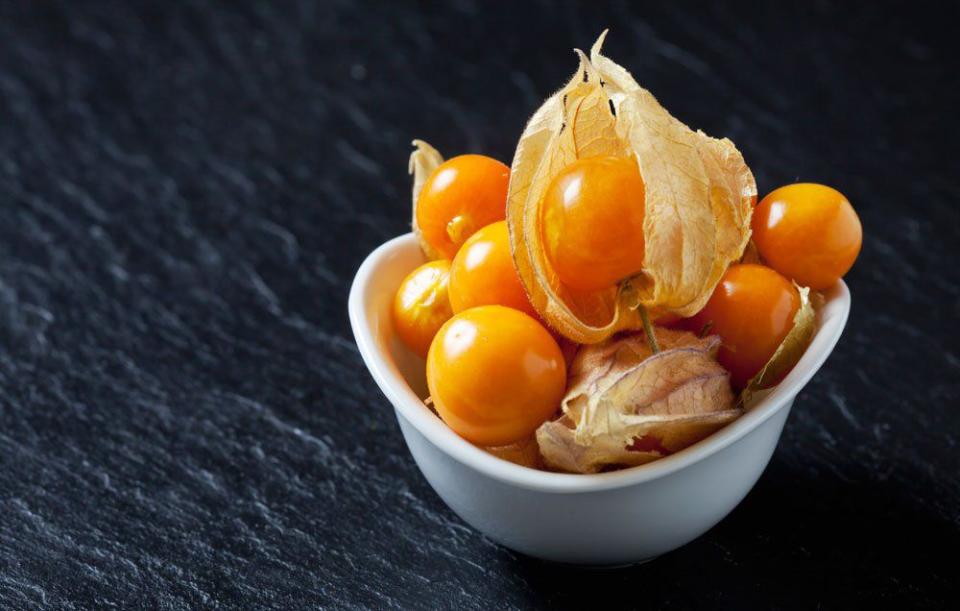How to Grow Hundreds of Ground Cherries

Ground cherries (Physalis spp.), often called cape gooseberries, are native in many parts of the United States and often grow in fields and alongside roads. Ground cherries have large, deep green leaves and tons of pale yellow flowers that develop into cherry-sized fruits.
To grow your own, start seeds of this frost-sensitive plant indoors six to eight weeks before the average last-frost date or buy transplants, which are increasingly available at nurseries and by mail order. Be sure to harden off seedlings before transplanting ground cherries outdoors.
Recommended Varieties of Ground Cherries
Aunt Molly's: This Polish heirloom with a captivating citrus flavor takes 70 days to fruit.
Pineapple: A popular variety with a distinct pineapple taste, this one takes 75 days to fruit and stores well in husks.
Goldie: This variety also takes 75 days to produce masses of large, golden fruit.
Planting Ground Cherries

Transplant ground cherries after all danger of frost has passed and the soil is thoroughly warm. Raised beds are best for growing ground cherries, especially in heavy clay soils, because the plants need good drainage.
Work a couple inches of compost into the soil before planting. Like tomatoes, ground cherries sprout roots along their stems, so plant seedlings deeply, leaving three sets of leaves above the soil line. Set the plants 3 feet apart in rows 3 to 4 feet apart. Ground cherries produce up to 300 fruits per plant and bear nonstop until frost. Four to six plants are sufficient for the average-sized family.
Mulch lightly to suppress weeds and conserve soil moisture. Ground cherries thrives best with 2 inches of water per week. Spray the plants with diluted fish fertilizer when they set flowers and again two weeks later.
The undersized cages sold for tomatoes work perfectly for supporting lightweight ground cherries and will keep them from sprawling.
Prevent weeds and make harvesting easier by growing ground cherries on landscape fabric. Before planting, spread the cloth over the bed and secure with landscaping pins. Then cut holes into the fabric and plant seedlings.
Common Ground Cherry Problems

Ground cherries are susceptible to the same pests and diseases as tomatoes and tomatillos, but are hardier, perhaps because of their weed-like nature. Flea beetles and whiteflies can attack, especially if the plants are drought-stressed. Keep plants regularly watered and place floating row covers over them if these pests are particularly prevalent in your garden.
Harvesting Ground Cherries

Ground cherries typically bear fruit about 70 days from transplant (late July to August in most regions) and continue until frost. The ground cherries have the peculiar characteristic of falling to the ground before they are ripe. Simply gather them up after they drop and keep them at room temperature in a basket without removing their husks. In a week or less, their color will deepen from light yellow to the warm apricot gold that signals ripeness. Store ground cherries in their husks. They will stay fresh for up to three months if placed in a mesh bag and kept in a cool place (about 50 degrees).
Eating Ground Cherries

The distinctive, sweet-tart taste of ground cherries lends itself to wildly diverse recipes. Remove the husks and rinse the fruits before preparing. Husked fruits keep in the refrigerator for five to seven days.
To freeze ground cherries, simply spread the husked, washed fruits on a rimmed cookie sheet and place them in the freezer. Once they're hard, package them in plastic bags.
The simplest way to eat ground cherries is to remove the husk and pop the fruit into your mouth. Raw, chopped ground cherries also taste delicious dropped into pancakes or mixed into salsa. Or, try this quick dessert recipe:
Ground Cherry-Pineapple Crumble
Serves 4
3 cups halved ground cherries
3 cups fresh pineapple chunks
½ cup sugar
½ cup blanched almonds
¼ cup unsalted butter
¼ cup flour
½ cup brown sugar
1. Combine ground cherries and pineapple chunks with sugar. Spread in a baking pan.
2. In a food processor, pulse almonds until coarsely chopped, and then add butter, flour, and brown sugar. Pulse until roughly blended; then spread over the fruit.
3. Bake at 375 degrees or 30 to 40 minutes, or until bubbling and golden. Serve warm with vanilla ice cream.
('You Might Also Like',)


